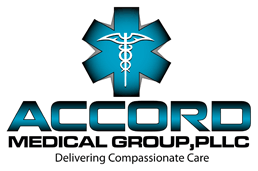Premature Labor & Delivery
Introduction
Anatomy
Causes
Many factors can increase the risk for premature labor and birth. Fortunately, many of the risk factors can be identified in prenatal care visits and reduced. In some cases, premature labor occurs for no known reason. You should contact your doctor immediately if you suspect you are having preterm labor. Your doctor may be able to take steps to help prevent premature birth, allowing your baby more time to develop.
Symptoms
You should contact your doctor if you suspect you are experiencing labor. Call your doctor or go to the hospital immediately if you have bleeding with cramps and pain, watery vaginal discharge, or regular contractions that are 10 minutes apart or less.
Diagnosis
Treatment
If it appears that premature birth is likely, you may receive medications to help your baby’s lungs mature. After birth, your baby will likely be admitted to the neonatal intensive care unit for 24-hour care from neonatal specialists. Your baby will probably be placed in an incubator to keep him or her warm. Ventilators may be used to help your baby breathe. Your baby may receive nutrition from feeding tubes until he or she is strong enough to suck from a bottle or breast feed.
Prevention
Am I at Risk
There are many risk factors for preterm labor and delivery. The more risk factors you have, the greater your risk for preterm delivery. However, women without any risk factors and a healthy pregnancy may experience preterm labor and delivery. You may increase your chances of carrying your baby to full term by eliminating the risk factors that you can control. Prenatal appointments with your doctor are important for identifying and treating problems promptly.
Risk factors for preterm labor and delivery:
_____ Females under age 17 and women over age 35 have a higher risk for preterm labor and delivery.
_____ Alcohol increases the risk for preterm delivery. You should not drink alcohol while you are pregnant.
_____ Substance abuse increases the risk of preterm delivery. You should not use illegal drugs if you are pregnant.
_____ Certain medications can increase the risk of preterm delivery. Make sure you have your doctor review the medications that you are on before you become pregnant. Consult your doctor before taking medications after you know you are pregnant.
_____ Smoking is associated with preterm delivery. Quit smoking before you become pregnant or as early as possible in pregnancy. Smoking is not good for you or your developing baby.
_____ Not gaining enough weight during pregnancy may contribute to preterm delivery. Seek prenatal care so that your doctor can monitor your weight gain.
_____ Poor nutrition and inadequate vitamin intake is a risk factor for preterm delivery. Make sure to eat a well-balanced diet and take prenatal vitamins. Ask your doctor about healthy eating during pregnancy if you are not sure.
_____ Infections, including rubella, certain sexually transmitted diseases, vaginal infections, and urinary tract infections can cause premature delivery. Let your doctor know if you have a sexually transmitted disease or contact your doctor if you develop symptoms of an infection so that it may be treated.
_____ Chorioamnionitis is an infection of the amniotic fluid and a major cause of preterm delivery.
_____ A hormone imbalance can cause preterm delivery. Your doctor can test your hormones and prescribe hormones if necessary to help prevent preterm delivery.
_____ An incompetent cervix may dilate early and lead to preterm delivery. The cervix may be sutured closed (cerclage) at about the 14th week of pregnancy for women with a high-risk.
_____ Researchers suggest that uterine irritability may cause premature contractions in some women.
_____ Sexual intercourse and orgasm may trigger uterine contractions in high-risk women during the last few months of pregnancy.
_____ A low-lying placenta, termed placenta previa, may increase the risk of premature labor. The condition may be avoided with bed rest.
_____ A chronic condition in the mother may contribute to preterm labor and delivery. Such conditions include high blood pressure, heart disease, liver disease, diabetes, and kidney disease.
_____ Women carrying more than one baby have an increased risk for premature labor and delivery.
_____ Women with an abnormal shaped uterus have a higher risk for premature labor.
_____ Too much amniotic fluid increases the risk of premature labor.
Complications
Advancements

Copyright © - iHealthSpot Interactive - www.iHealthSpot.com
This information is intended for educational and informational purposes only. It should not be used in place of an individual consultation or examination or replace the advice of your health care professional and should not be relied upon to determine diagnosis or course of treatment.
The iHealthSpot patient education library was written collaboratively by the iHealthSpot editorial team which includes Senior Medical Authors Dr. Mary Car-Blanchard, OTD/OTR/L and Valerie K. Clark, and the following editorial advisors: Steve Meadows, MD, Ernie F. Soto, DDS, Ronald J. Glatzer, MD, Jonathan Rosenberg, MD, Christopher M. Nolte, MD, David Applebaum, MD, Jonathan M. Tarrash, MD, and Paula Soto, RN/BSN. This content complies with the HONcode standard for trustworthy health information. The library commenced development on September 1, 2005 with the latest update/addition on February 16, 2022. For information on iHealthSpot’s other services including medical website design, visit www.iHealthSpot.com.

